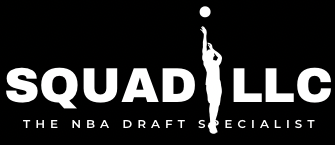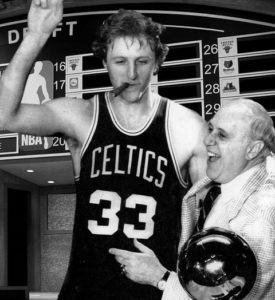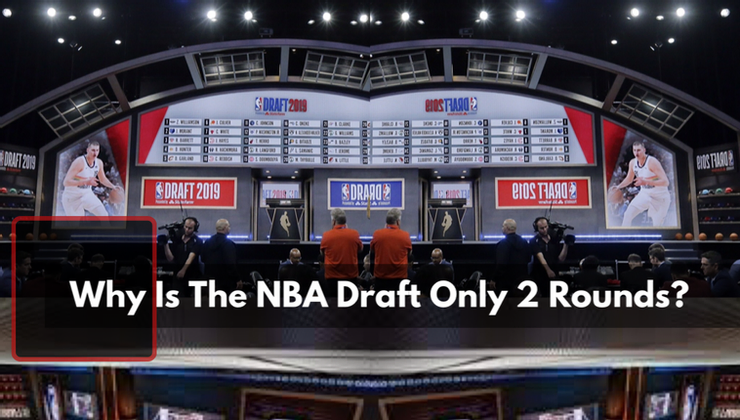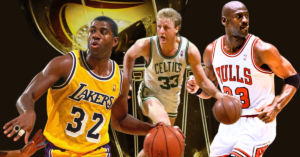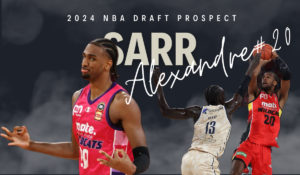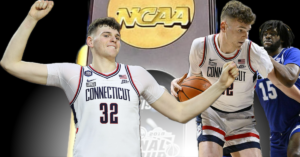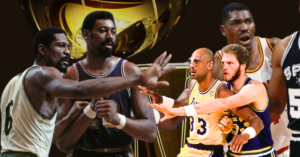How Important Are the NBA Draft Lottery Picks for Team Success?

Each year, and often years ahead of the official draft, mock draft projections are calculated and recalculated for the new class of potential NBA superstars. Teams covet the best of the elite so much so that a ping-pong ball lottery is almost as exciting as the actual draft itself.
Most of the top picks are a foregone conclusion, so who wins the NBA draft lottery is in all honesty about as important as which players are taken. However, lottery status isn’t a guarantee for player or team success.
Here’s a look at the NBA draft lottery picks selected over a span of five seasons dating back to 2014. We’ve given the most recent draft class a pass. History indicates that it can take multiple seasons for players to realize their actual potential. In any event, here is five years worth of lottery analysis.
Just in case you’re unaware of what we mean by NBA Draft lottery picks, here’s a quick overview. The draft lottery involves the 14 NBA teams who miss the playoffs. Through a good old ping-pong ball machine, draft positions are determined for the picks in NBA draft.
Originally, there was a formula that assigned odds to the teams with the worst win/loss records. Beginning last year, each of the three worst records gets a 14-percent chance of winning the top lottery spot. Ping-pong balls determine the first four selections.
The old system, used for each of the lottery drafts we discuss, set the initial top-three picks. With this change approved in 2017, the team with the worst record in the league is now guaranteed no worse than the fifth overall selection.
Spots 5 through 14 are now determined using wins and losses from the regular season. By using the lottery system, the NBA has added another engaging feature for fans. Not only do the teams who miss the playoffs earn a shot at the top prospects, but there is a level of excitement surrounding the order of picks in the NBA draft.
Five Years of Draft History
After the order of the draft is set, the next bit of intrigue surrounds which available college and international players will go where. There are dozens of mock drafts created in an effort to project which player will wear what NBA uniform.
In fact, mock drafts are drawn up sometimes years in advance. Of course, the closer we get to draft day the more accurate these projections will become. But, these mock drafts will never be 100 percent certain of what an NBA front office is truly thinking.
Here’s an overall assessment of the past five years and how the NBA draft lottery results have shaped the league.
2014
The Milwaukee Bucks had the best odds of earning the number one pick after the NBA draft lottery results. However, it was the team with the ninth highest probability that got the number one pick.
In 2014, Cleveland parlayed that selection into a run that saw them play in the NBA Finals four consecutive seasons. Sure, a fellow by the name of LeBron James had a lot to do with that run; a stretch that earned the city of Cleveland its first professional championship in decades.
The 2014 top pick was actually Cleveland’s third during a four-year stretch beginning in 2011. Andrew Wiggins was the top pick, but within 60 days he was part of a three-team trade that saw Cleveland add another key piece to the team.
Kevin Love, still in Cleveland today, partnered with James and Kyrie Irving to help make Cleveland the Beast of the East. Wiggins has yet to be dubbed a superstar amongst the decades of NBA greats.
Out of all 14 lottery picks in 2014, only Joel Embiid is beginning to look like a player worthy of carrying a franchise into new horizons. Embiid was the first Philadelphia player drafted to be part of The Process.
The Process Era in Philadelphia started a couple years before Embiid was taken, but none of those early draftees are still in the City of Brotherly Love. A key point from the 2014 lottery selections is that six out of the first nine were one and done freshmen, players who played a single season at the college level.
Another interesting bit of information, maybe more intriguing than the young age of the lottery players, was that only five of the first 14 out of the 2014 lottery class are still with their original teams. Some were traded almost immediately after being picked, while others simply did not live up to their lofty expectations.
Then there is Nikola Jokic. It’s worthy to note that he was drafted at 41 in the second round. His impact on the Denver Nuggets franchise is arguably greater than all of the 2014 NBA Draft lottery picks.
2015
Nearly every mock draft prior to the 2015 had the same ultimate result, Karl-Anthony Towns was going to go first. Now, who won the battle of the ping-pong balls was the true excitement. Minnesota took honors and still has a centerpiece for rebuilding their franchise.
With former number one Wiggins aside Towns, expectations for the Timberwolves has been high in recent years. However, like many teams who get high marks in ping-pong ball outcomes, the players haven’t always generated success.
Three NCAA freshmen and a pair of Eastern Europeans from Croatia and Latvia took the top five spots in 2015. Of all 14 lottery picks, only four have yet to reach star status in their three full seasons. Second selection D’Angelo Russell is with his third team. Russell made his first all-star game just last season.
Kristaps Porzingis pushed for a trade out of the Big Apple after three seasons for the underachieving New York Knicks. Phoenix Suns guard Devon Booker has arguably made the biggest impact of any of the 14 highly-prized lottery picks from the 2015 NBA Draft.
2016
Outside of Brandon Ingram, there wasn’t change amongst the top three picks in the 2016 draft. The first three ping-pong ball winners all took college freshmen. Two of these players are key contributors on playoff teams. This is something a bit different from 2014 or 2015.
Ben Simmons was another consensus number one pick on nearly every mock draft. Along with Embiid, Simmons has turned The Process into playoff success. Jaylen Brown is a key member of a solid Boston Celtic team that, if not for the Cleveland Cavalier excellence, may have represented the Eastern Conference in the 2018 NBA Finals.
Brandon Ingram is off to a productive start for the New Orleans Pelicans’ 2019-2020 season. He’s currently averaging 25.9 points and connecting on 53 percent of his field goal attempts. But that production has not translated into wins. The Pelicans, dealing with key injuries, are currently 3-8.
Buddy Hield originally drafted sixth by the New Orleans Pelicans, recently agreed to a four year extension with the 4-7 Sacramento Kings, worth 94 million. Jamal Murray, drafted seventh, is a rising star for a Denver Nuggets team that came up one game short of the 2019 Western Conference finals. Domantas Sabonis, drafted 11th, is currently the leading scorer (19.6) and leading rebounder (13.3) for the 7-5 Indiana Pacers.
Two players that fell all the way to the end of the first round, have clearly been more impressive than some of top-14 picks and in hindsight should have been lottery picks.
Pascal Siakam, drafted 27th is an NBA Champion. Dejounte Murray, drafted 29th is a budding star for the San Antonio Spurs, the heir-apparent to the perennial all-star Tony Parker.
2017
As with each of the three previous seasons, a couple of trades involving drafted players made as much of an impact on the league as did the lottery process itself. One of the biggest sleepers turned out to be Donovan Mitchell.
Mitchell almost fell out of the first 14, and was then traded to Utah from Denver, the team who drafted him with their lottery pick. Mitchell is clearly the most impactful player from his class thus far. In his first pro season, Mitchell helped lead the Jazz to the Western Conference Semi-Finals.
Oddly enough, the first pick, Markelle Fultz, is now with his third NBA team. Fultz has been troubled by injuries, but he is further proof that winning the ping-pong ball wars isn’t a prescription for instant team success when it comes to picks in NBA draft lotteries.
It’s also worthy to note the short-lived Lonzo Ball experiment in Los Angeles. Jayson Tatum, a draftee on the Boston Celtics, who is making an obvious impact on his team’s fortunes. This says a lot about the inner-office workings of Danny Ainge’s Celtic staff.
While it might be premature to label many from the top-14 picks in 2017 as underachievers, Tatum, DeAaron Fox, Lauri Markkanen and now Luke Kennard have made an impact or are key contributors for their teams.
2018
The final year we take a look at is the draft from two Junes ago. During the 2018 NBA draft, there was ongoing speculation about which player the actual top pick might be. A young Slovenian stud drew a great deal of interest so much so that Luka Dončić went third to the Hawks.
However, like many of the most successful lottery picks, Dončić doesn’t play for the team that drafted him. Dončić traded to Dallas on draft night, is now establishing himself as one of brightest young stars that the NBA has seen in the past five seasons. In hindsight, based on early returns and opportunity provided, Luka Doncic should have been the first pick in the 2018 NBA draft.
Deandre Ayton earned top-pick honors, one of ten college freshmen mixed in with the single European player and three upperclassmen in the 2018 NBA lottery top-14. Ayton is gradually displaying the potential to become a true star, but he has been troubled by injuries and a suspension early in his young career.
Marvin Bagley, Jaren Jackson Jr, Trae Young, Mo Bamba, Wendell Carter Jr, Collin Sexton, Kevin Knox, Mikal Bridges, Shai Gilgeous-Alexander, Miles Bridges, Jerome Robinson and Michael Porter Jr are all showing promise in comparison to the level of opportunity that they have been provided to produce results.
Conclusion
The NBA draft lottery results make for fan excitement and intrigue for upcoming seasons. However, there are probably as many if not more non lottery players making an equal impact for teams as any of the 14 top selections since 2014.
It’s difficult to grade the most recent NBA draft picks, since history proves that it often takes three to four seasons to develop an NBA player. Becoming a superstar is another obstacle all-together.
What is worth noting is the prevalence of youth in every draft, especially the lottery picks. Many of these players are young men with only a single season under the belt at the collegiate level. Out of 70 total picks, 53 have been a mix of freshman (43) and international players (10).
Skipping college altogether, one name has certainly fueled the pursuit of the young player, many a few years ahead of their prime. However, players with LeBron James-type talent come along rarely. It appears about as rare as a lottery draft pick in the NBA instantly altering the course of a franchise.
Most of the NBA draft picks “worthy” of the 14 lottery spots are still playing professional basketball. These players are too talented to have fallen off the radar completely. However, the monumental impact many of these young stars were forecast to have, as yet has not been realized.
But, do you put that blame on the player, coaching staff or the front office making the lottery selection? Each situation is different.
The moral of the story is this. A competent NBA front office staff will find talent in the first round, second round or outside of the NBA draft. Time may prove some of these players to have been too green for the pro level, and with some more seasoning they will realize their true potential. Until then, NBA Front Offices will be searching for the next superstar who flies on or off of everyone’s mock draft radar.
NBA DRAFT RELATED ARTICLES:
2020 NBA Draft Key Updates: Early Entry, Withdrawal, Lottery And Combine. Here’s What To Know
